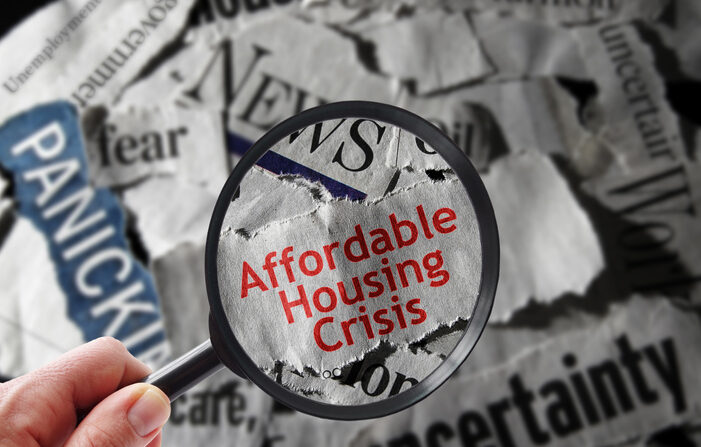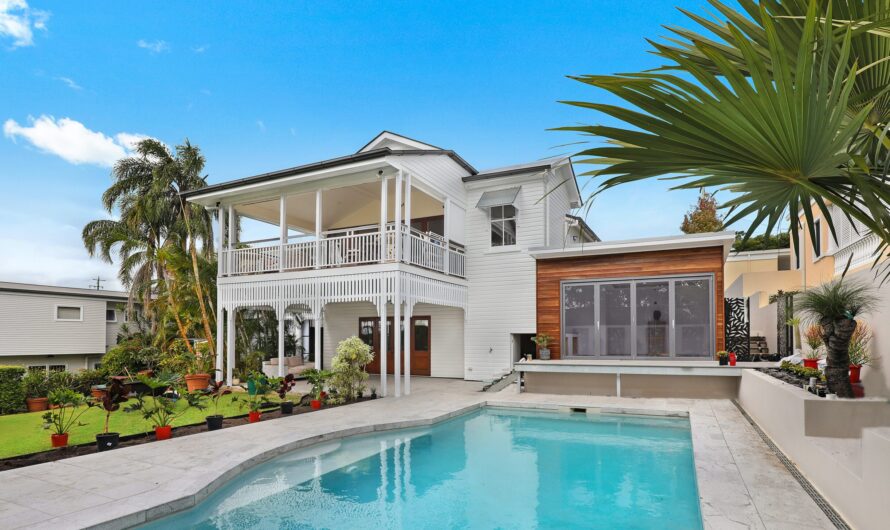Suburban living has experienced a real estate boom in recent years as people look to escape the hustle and bustle of city life. With the promise of more space, better schools, and a more relaxed lifestyle, it’s easy to understand why more and more people are choosing to move out of the city and into the suburbs. As a result, the demand for suburban real estate has skyrocketed, leading to a surge in prices and a variety of options available to those looking for a little extra space. From single-family homes to luxury condos and everything in between, suburban living can offer a wide variety of housing choices for those looking for a little extra space. Whether you’re looking for a place to raise a family or just looking for a quieter place to call home, suburban living has never been more desirable. In this article, we’ll explore the current real estate boom in the suburbs and discuss what kind of options are available for those looking to make the move.
Reasons Why People Are Moving to the Suburbs
The suburban real estate boom has been driven by a number of factors, the most prominent of which is the increasing desirability of suburban life. Many people are drawn to the suburbs by the promise of a quieter lifestyle and more space. With fewer people and less traffic, the suburbs offer an escape from the hustle and bustle of city life. For many, the prospect of a more relaxed lifestyle is enough to make the move.
In addition, the suburbs offer better schools, safer neighborhoods, and a greater sense of community. With a lower crime rate and better school options, the suburbs have become increasingly attractive to young families looking for a safe place to raise their children. Many suburbs also offer a strong sense of community, with neighbors often coming together to support one another and take part in local events.
Finally, the suburbs offer more affordable housing options than many cities. With housing prices skyrocketing in many urban areas, many people are looking to the suburbs for more affordable options. With lower prices and more space, the suburbs offer a great option for those looking to buy a home without breaking the bank.
Types of Suburban Real Estate Available
Suburban living offers a wide variety of real estate options, from single-family homes to luxury condos. Single-family homes are the most common option, with a wide range of styles and sizes available. From traditional colonial homes to modern ranch-style houses, there’s sure to be something for everyone.
In addition, many suburbs offer townhomes and condos. Townhomes offer the convenience of a single-family home with the added benefit of a shared yard and communal amenities. Condos are a great option for those looking for a more luxurious lifestyle, with many offering access to pools, gyms, and other amenities.
Finally, many suburbs offer a variety of rental options, from apartments to duplexes. For those looking to test the waters before committing to a purchase, these rental options can be a great way to get a feel for suburban living.
The Benefits of Suburban Living
Suburban living offers a number of benefits, from a more relaxed lifestyle to more affordable housing options. With quieter streets, better schools, and a greater sense of community, the suburbs have become increasingly attractive to those looking to escape the hustle and bustle of city life.
In addition, the suburbs offer more space and a greater sense of privacy. With less people and less traffic, the suburbs provide a more peaceful atmosphere for those looking for a quieter place to call home.
Finally, many suburbs offer a wide variety of recreational activities. From parks and playgrounds to community centers and swimming pools, there’s sure to be something for everyone.
The Challenges of Suburban Living
Despite the many benefits of suburban living, there are also a number of challenges that come with the territory. For many, the biggest challenge is the lack of public transportation. While some suburbs offer public transportation, many do not, forcing residents to rely on cars for transportation. This can be a challenge for those who are used to relying on public transportation for their daily commute.
In addition, many suburbs lack the diversity and cultural amenities that cities offer. Without the variety of restaurants, shops, and entertainment options, many suburbanites find themselves longing for the city life.
Finally, the cost of living in the suburbs can be higher than in the city, making it more difficult to afford the suburban lifestyle. With higher taxes and more expensive housing, the suburbs can be a challenge for those looking to save money.
Suburban Real Estate Boom: An Overview
The suburban real estate boom began in the early 2000s and has continued to grow ever since. With rising demand and increasing prices, the suburbs have become an increasingly attractive option for those looking to escape the hustle and bustle of city life.
The suburban real estate market has seen double-digit growth in the past few years, with prices continuing to rise. This has led to a surge in demand, as more and more people look to the suburbs for a quieter, more affordable option.
The boom has also led to a variety of new housing options. With more developers entering the market, the suburbs now offer a wide variety of housing choices, from single-family homes to luxury condos and everything in between.
The Impact of the Suburban Real Estate Boom
The suburban real estate boom has had a significant impact on the housing market. With prices continuing to rise, many people are finding it difficult to afford the suburban lifestyle. In addition, the surge in demand has led to a shortage of available homes, making it more difficult for buyers to find the right home.
The boom has also had an impact on the economy. With more people moving to the suburbs, businesses have had to adjust to meet the increased demand for goods and services. This has created a surge in job opportunities in the suburbs, leading to increased economic growth in many areas.
Finally, the boom has led to an increase in taxes in some areas. With more people moving to the suburbs, local governments have had to raise taxes to cover the increased cost of providing services. This has led to higher taxes in some areas, making it more difficult to afford the suburban lifestyle.
Tips for Finding the Right Suburban Home
Finding the right suburban home can be a challenge, but there are a few tips that can make the process a bit easier.
First, do your research. Take the time to research the different neighborhoods and housing options available in the suburb you’re considering. Make sure to look at local crime rates and school options to make sure you’re making the right decision for you and your family.
Second, talk to a real estate agent. A real estate agent can be a great resource when it comes to finding the right home. They’ll be able to provide you with valuable insights into the local market and help you find the perfect home for you and your family.
Third, consider your budget. Before you start looking for a home, make sure to consider your budget. Make sure to factor in the cost of taxes, insurance, and homeowners association dues to make sure you’re not overspending.
Finally, don’t be afraid to negotiate. Once you’ve found the right home, make sure to negotiate a fair price. Many sellers are willing to negotiate, so don’t be afraid to make an offer.
Financing a Suburban Home
Financing a suburban home can be a challenge, but there are a few options available.
First, you can take out a conventional loan. Conventional loans are the most common type of mortgage and are available from a variety of lenders. These loans typically require a good credit score and a down payment of at least 3%.
Second, you can take out a government-backed loan. These loans, such as FHA and VA loans, are backed by the government and are available to those with lower credit scores or limited funds for a down payment.
Finally, you can take out a loan from a local bank or credit union. These loans can be a great option for those looking for a more personalized experience.
The suburban real estate boom has been driven by a number of factors, from more affordable housing options to a quieter lifestyle. With rising demand and increasing prices, the suburbs have become an increasingly attractive option for those looking to escape the hustle and bustle of city life. From single-family homes to luxury condos and everything in between, suburban living can offer a wide variety of housing choices for those looking for a little extra space. Whether you’re looking for a place to raise a family or just looking for a quieter place to call home, suburban living has never been more desirable. With a little research and some savvy negotiating, you can find the perfect suburban home for you and your family.





